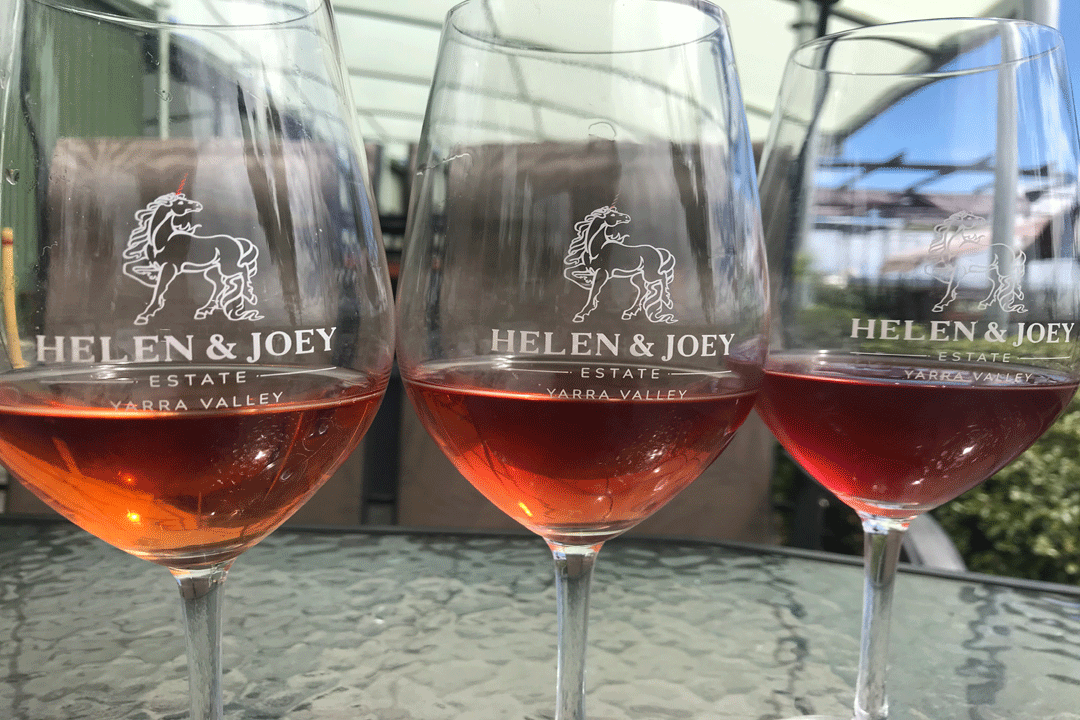
The Rosé Revolution
Originating from the French word ‘rose’, the very elusive rosé is finally having its rightful moment in the spotlight. The modest drink is turning heads and challenging refined taste buds all around the world. Rosé has a very rich history –one that can be dated back centuries. At present, the light-bodied wine is now proving itself as a popular choice for the young, old, and young at heart.
In this wine investigation,
Simi West delves into rose territory with Meg Brodtmann Master of Wine (MW), head winemaker at Helen & Joey Estate about the rise and revolution of an often divisive and misunderstood wine – the wonderful elixir that is rosé!
the rise of rosÉ
The history of rosé is incredibly fascinating. At the conclusion of World War Two, two Portuguese vigneron families released sweet rosé to the European and American markets. Nearing the twenty-first century, rosé still had a less than flattering reputation, and was more of an afterthought, rather than a leading lady. In the hearts and minds of many, it became secondary to red or white wines. “Commercial producers of wine used rosé as a vehicle to promote cheap, sweeter wines to an immature wine market … rosé was seen as crass,” Brodtmann explains. “About a decade and a half ago, a group of forward-thinking individuals from various parts of the wine trade decided to work towards turning this around. They called themselves the Rosé Revolution.” This group of vignerons drew inspiration from less prolific, but quality focused winemakers helming from Italy, the Iberian Peninsula and the South of France. Their alternative approach to winemaking changed the perception of rosé and, “the drier, more food-friendly style of rosé was tirelessly promoted,” Brodtmann explains. It’s clear from their persistence that rosé was always a force to be reckoned with!

COOL FOR THE SUMMER
Each winemaker has their own individual techniques and tricks when it comes to producing rosé. At Helen & Joey Estate, Brodtmann explains the methods the winemaking team employs: “We pick the grapes, crush and destalk the fruit and allow eight hours of skin contact at an ambient temperature. The juice is then pressed off and fermented as for a light aromatic white wine.” Brodtmann continues, “We pick the fruit less ripe than we would for making red wine and can do so as this is a purpose-built rosé, rather than a by-product wine.”
THE JUGGERNAUT OF food & wine
Those who like to dabble in the art of cooking and fine dining need not worry about finding a dish that will fare well with rosé. “Rosé is often a good pairing with foods that can be tricky to match with other wine styles.”Brodtmann says. Rosé is an excellent sidekick to many main meals, and Brodtmann has a litany of ideas to try.
“Rosé really is about ease of living and should remain free of fashion and pretence.”


a wine of all ages
Rosé really is the perfect drink for the young at heart and is typically enjoyed young itself – though you might want to choose a slightly older vintage when winter rolls around. “For thirst quenching consumption, then [choose] young wines,” Brodtmann says. “In the cooler months, I prefer wines that are two to three years old; when they get a bit more savoury and rich.” If you’re a wine novice, Brodtmann’s advice is to try any variety of rosé, as none will offend. “The worst thing that rosé can do is underwhelm. Some may be a little acidic and thin, which can come across as a little too dry,” she says. “Ours is particularly soft and has deeper fruit flavours [to] suit all tastes!”
LET THEM DRINK ROSÉ!
There are a multitude of options to consider when purchasing rosé, with prices ranging from single digits to the hundreds. Considering the blending process varies between winemakers, Brodtmann advises consumers to be wary of colour, as it can be heavily manipulated by commercial processors, and isn’t a true testament of style or quality. “The only guarantee for consumers in choosing any wine, or any premium agricultural product, is to know the producer,” Brodtmann says.

